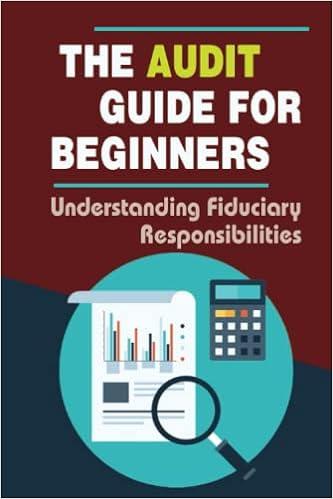Question
TRUE OR FALSE a. Standard may be worthwhile to improve relevance or reliability of information in the longer term. Appropriate disclosures may fully compensate for
TRUE OR FALSE
a. Standard may be worthwhile to improve relevance or reliability of information in the longer term. Appropriate disclosures may fully compensate for the inability of users to compare information in some instances
b. In the extremely rare circumstances when management concludes that compliance with this Standard would be so misleading that it would conflict with the objective of financial statements of SMEs set out in Section 2, the entity shall depart from that requirement in the manner set out in paragraph 3.5 unless the relevant regulatory framework prohibits such a departure.
c. An entity changes the presentation of its financial statements only if the changed presentation provides information that is reliable and more relevant to users of the financial statements and the revised structure is likely to continue, so that understandability over time is not impaired
d. If an entity discovers an error in the financial statements of a current period, the error is corrected by retrospective restatement (ie the comparative information is restated). Retrospective restatement provides useful informationthe information is more relevant, more reliable and more comparable
e. An entity changes the presentation of its financial statements only if the changed presentation provides information that is reliable and more relevant to users of the financial statements and the revised structure is likely to continue, so that comparability over time is not impaired
f. An entity that claims compliance with the IFRS for SMEs Standard elects to present earnings per share in accordance with IAS 33 Earnings per Share. The entity discloses that fact and adequately describes the basis for preparing and presenting earnings per share in its annual financial statements
g. Relevance is the term used to describe that verifiablity. Many decisions by owners, potential owners, lenders and other creditors are based on implicit or explicit predictions about the amount and timing of the return on an equity investment, loan or other credit instrument
h. The materiality of information depends on the size and nature of the omission or misstatement judged in the surrounding circumstances. The size or nature of the item, or a combination of both, could be the determining factor.
i. Some entities that prepare their financial statements in compliance with full IFRS Standards present earnings per share applying IAS 33 Earnings per Share. The IFRS for SMEs Standard does not require earnings per share to be presented in financial statements
j. Historical cash flow information is also useful in examining the relationship between profitability and financial performance.
k. Cash flow information also enhances the comparability of the reporting of operating performance by different entities because it eliminates the effects of using different accounting treatments for the same transactions and events
l. The direct method presents operating cash flows by major classes of gross cash receipts (for example receipts from customers) and gross payments (for example payments to suppliers or employees)
m. If an entity has no items of other comprehensive income in any of the periods for which financial statements are presented it may present a statement of comprehensive income .
n. The statement of cash flows provides information about the changes in cash and cash equivalents of an entity for a reporting period, showing separately changes from operating activities, investing activities and financing activities
o. Disclosing information for the prior period as well as for the current period increases the usefulness of the financial statements as it enables comparisons to be made.
p. An entitys current account with a commercial bank has a balance of CU2,000. The balance is payable on demand and is available immediately without penalty. The CU2,000 in the current account is cashit is a demand deposit.
q. An entity that prepares its financial statements in compliance with the IFRS for SMEs Standard is required to present segment information and is required to present earnings per share. However, an entity that chooses to present either segment information or earnings per share, or both, is required to describe the basis for preparing and presenting that information.
r. Cash equivalents are :
they are short-term; they are highly liquid investments; they are readily convertible to known amounts of cash; and they are subject to an insignificant risk of changes in value
s. Transactions that do not involve a flow of cash and cash equivalents (non-cash transactions) are included in the statement of cash flows even when non-cash transactions are financing or investing activities (for example, when an entity acquires machinery on credit or the entity issues shares to its owner in exchange for a building contributed by the owner).
t. An entity has cash on a two-month fixed rate (5% per year) deposit with a commercial bank. If the entity withdraws the capital before it matures it forgoes an insignificant portion of the interest. On maturity the entity expects to use the proceeds to settle with its trade creditors
The fixed deposit is a cash equivalentit is short-term (two months from inception), highly liquid (can be withdrawn at any time), readily convertible into a known amount of cash (capital plus specified accrued interest) and subject to an insignificant risk of change in value (a fixed-interest-rate instrument with a two-month maturity is unlikely to change significantly in value in response to changes in market interest rates and the penalty for early redemption is insignificant). It is also intended to be used to meet short-term cash commitments
Step by Step Solution
There are 3 Steps involved in it
Step: 1

Get Instant Access to Expert-Tailored Solutions
See step-by-step solutions with expert insights and AI powered tools for academic success
Step: 2

Step: 3

Ace Your Homework with AI
Get the answers you need in no time with our AI-driven, step-by-step assistance
Get Started


